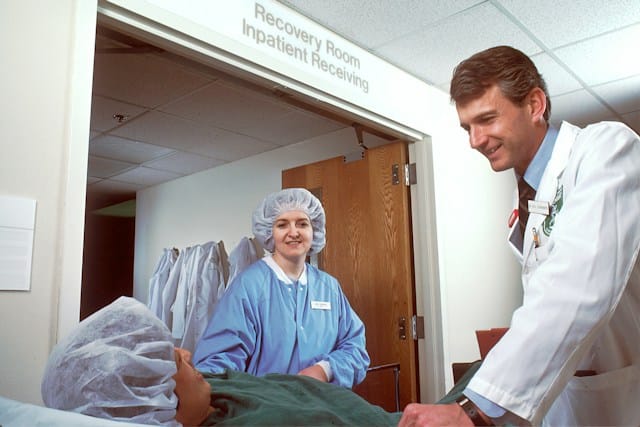As we enter this new era of medical advancements, regenerative medicine is gaining significant traction for its promising potential in treating an array of health conditions. One such area where its impact is visibly transformative is in treating joint and cartilage related issues. Regenerative medicine, particularly, stem cell therapy, provides an innovative and less invasive approach to repair damaged joint tissue, bypassing the need for extensive surgeries.
This article delves into how regenerative medicine, specifically stem cell therapy, is changing the game in treating joint pain and related ailments. We’ll discuss how these therapies work, their advantages, and the scientific evidence supporting their effectiveness.
Sujet a lire : Can Smart Homes Improve Health Care for the Elderly?
Understanding Regenerative Medicine and Stem Cell Therapy
Regenerative Medicine is a groundbreaking field of medicine that aims to repair or replace damaged or diseased cells and tissues. It uses therapies like stem cell treatment and platelet-rich plasma (PRP) to stimulate the body’s inherent repair mechanism.
Stem cell therapy, a subset of regenerative medicine, relies on the body’s stem cells’ unique ability to transform into a multitude of different cells. This therapy uses these versatile cells to replace diseased or damaged tissue, including knee cartilage, making it an invaluable tool in treating joint-related issues.
A lire aussi : How Can AI in Healthcare Predict and Prevent Chronic Diseases?
Using Stem Cell Therapy for Joint Repair
Stem cells’ versatility and ability to self-renew and differentiate into different cell types make them an excellent resource for repairing damaged joints. In recent years, the use of stem cell therapy for joint repair has seen a significant uptick. It is mainly used for repairing knee cartilage, a common condition that causes pain and discomfort for many.
The stem cells used for this purpose are typically harvested from the patient’s bone marrow or adipose tissue. Once harvested, they are then injected into the damaged joint area. The idea is that these cells will evolve into new cartilage cells, replacing the worn-out ones and promoting healing.
Moreover, stem cell therapy serves as an excellent alternative for patients who are not suitable candidates for surgery or those looking for minimally invasive treatment options. It also aids in reducing the recovery time compared to traditional surgical treatments.
The Efficacy of Stem Cell Therapy: What Does the Research Say?
Considering the clinical implications of stem cell therapy, numerous scholars and researchers have undertaken studies to establish its effectiveness in joint repair.
For instance, a study published in the PubMed database found that patients with knee osteoarthritis showed significant improvement in pain and function six months after stem cell treatment. Another study concluded that stem cell injections into the knee joint could reduce pain and improve the quality of life for people with knee osteoarthritis.
While more clinical trials are underway to understand the long-term impacts of stem cell therapy, the initial results are promising. These findings suggest that stem cell therapy could indeed revolutionize the treatment of joint pain and related diseases.
Platelet-Rich Plasma (PRP) Therapy in Joint Repair
Another notable technique in regenerative medicine is Platelet-Rich Plasma (PRP) therapy. Similar to stem cells, PRP therapy uses the body’s cells to heal damaged tissues.
In PRP therapy, a concentration of platelets, which are cells in your blood that initiate tissue healing, are injected into the injured area. These platelets release growth factors that promote tissue repair and regeneration, thus alleviating pain and enhancing joint function.
Like stem cell therapy, PRP also presents a less invasive alternative to surgery. While PRP therapy has been around for a while, advancements in technology have made it a more viable and effective therapeutic option for joint repair.
The Future of Joint Repair: Beyond Stem Cells and PRP
As the field of regenerative medicine continues to evolve, researchers are exploring other therapeutic options for joint repair. For instance, some scientists are delving into the potential of other types of cells, like synovial mesenchymal stem cells, for their regenerative properties.
While these therapies are still in the experimental phase, they hold great promise for the future of joint repair and regenerative medicine as a whole. One thing is clear: as our understanding of the body’s healing mechanisms deepens, the possibilities for regenerative therapies are becoming increasingly endless.
In conclusion, it is an exciting time in the field of regenerative medicine. With continued research and development, we may soon have a plethora of treatment options that not only treat joint pain and damage but also enhance our body’s inherent healing capabilities.
Emerging Techniques in Regenerative Medicine
The cutting-edge techniques in regenerative medicine are not limited to stem cell and PRP therapies. As we move ahead, several emerging approaches point towards a promising future in the field of joint repair. One such approach being explored is the use of synovial mesenchymal stem cells.
Synovial Mesenchymal Stem Cells (SMSCs) originate from the synovium, a soft tissue in your joints that produces synovial fluid for lubrication. SMSCs have shown greater potential for cartilage repair compared to other stem cells, making them a promising candidate for advanced regenerative medicine.
Another groundbreaking technique is the use of 3D bio-printing. This technology allows scientists to print living tissues layer by layer, using a patient’s cells. This emerging technology provides the potential to create fully functional tissues and organs, offering hope for a potential solution for joint replacement surgeries in the long term.
Gene therapy is another technique under investigation. It involves modifying or replacing disease-causing genes to treat or prevent diseases. Researchers are exploring the potential of using gene therapy to stimulate the production of cartilage in joints, which could be a game-changer in the treatment of osteoarthritis.
While these techniques are still in the experimental stages, the preliminary results reported in various articles on PubMed and Google Scholar are promising. However, more extensive research and clinical trials are necessary to confirm their safety and effectiveness.
Conclusion: The Future of Regenerative Medicine in Joint Repair
Despite the challenges and the need for more comprehensive research, the field of regenerative medicine holds immense potential. With stem cell therapy, PRP, and emerging techniques like the use of synovial mesenchymal stem cells, 3D bio-printing, and gene therapy, we are on the cusp of a revolution in joint repair and treatment.
In addition to offering less invasive treatment options, these regenerative therapies could potentially reduce the recovery time for patients, improve their quality of life, and potentially eliminate the need for more invasive procedures like knee replacement surgeries.
However, the success of these therapies largely depends on the continuous research and development in the field, which will help understand their long-term impacts and potential risks better. Despite the challenges, the future of regenerative medicine in sports medicine and joint repair looks promising.
As researchers continue to explore the mysteries of the human body, the day may not be far when we can fully harness our body’s healing capabilities to treat joint pain and other health conditions. With the application of these cutting-edge techniques in regenerative medicine, we are indeed entering a new era of medical advancements.













